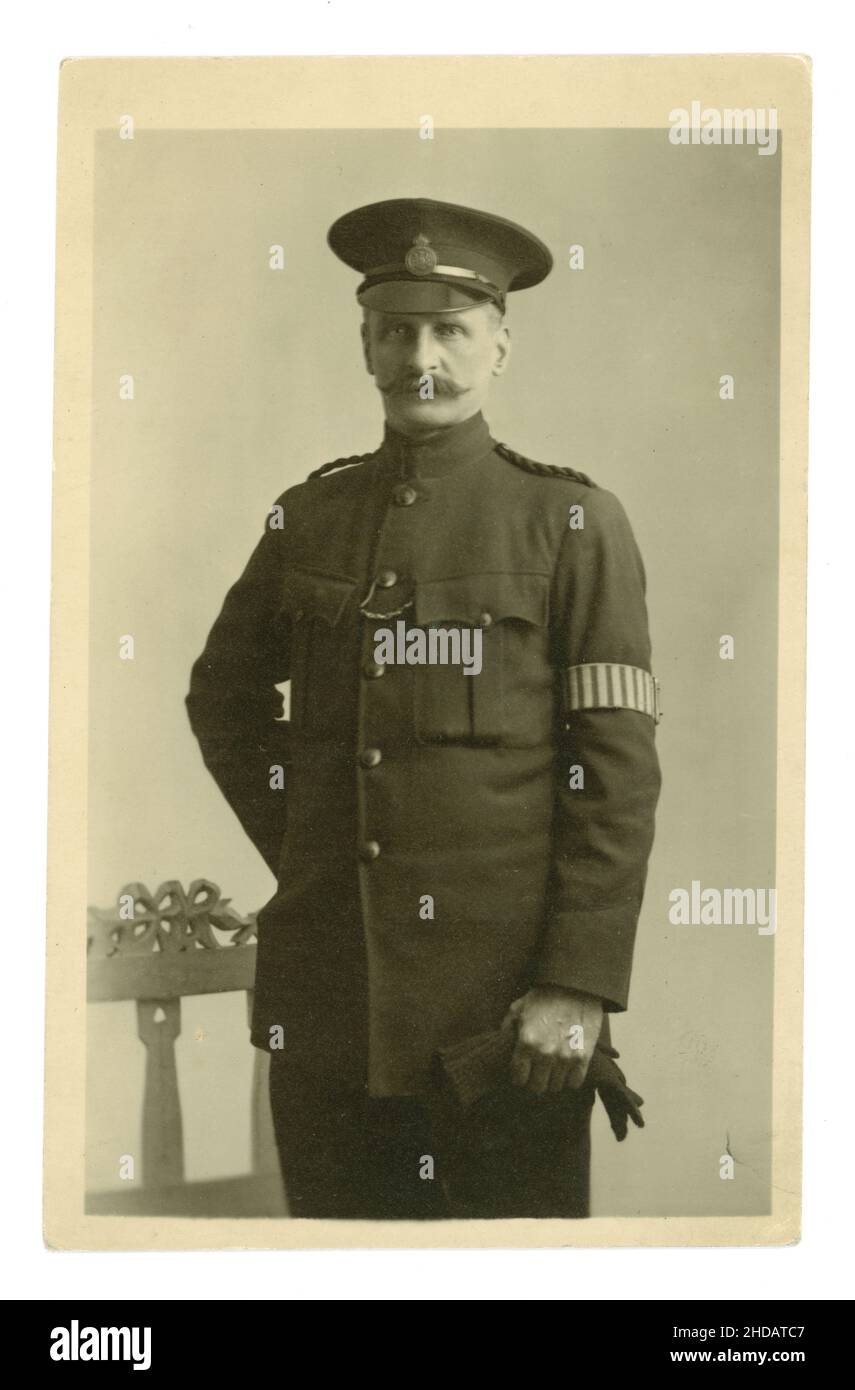WW1 era postcard of a Special Constable (Specials) His police cap badge denotes he was a member of the "Metropolitan Special Constabulary" He also wears a duty armband with vertical stripes, braided epaulettes. He is a handsome man with a "handlebar moustache". From E. Van Trolga's studios, Clapham or Putney area, London, UK . Circa 1916

Image details
Contributor:
thislife pictures / Alamy Stock PhotoImage ID:
2HDATC7File size:
92.7 MB (2.3 MB Compressed download)Releases:
Model - no | Property - noDo I need a release?Dimensions:
4618 x 7014 px | 39.1 x 59.4 cm | 15.4 x 23.4 inches | 300dpiDate taken:
1916Location:
London, England UKPhotographer:
ThislifeThenMore information:
This image could have imperfections as it’s either historical or reportage.
The Metropolitan Special Constabulary was an unpaid force supporting full time Policemen in London during WW1. The hat has a blackened night badge (for night time air raid duties) issued to Metropolitan Special Constabulary. The Special Constabulary was founded because so many police officers were signing up for military service in WWI that the authorities needed to fill the ranks. This man is not a regular Police Constable in the Metropolitan Police, but a Special Constable c.1915/16 - he is primarily identifiable as such by the crowned Special Constable badge visible on his cap, but also through his peaked cap (instead of the cork helmet used by regular PC's) with the crowned Metropolitan Police Special Constabulary badge in bronze, plus the Duty Armlet being worn on the upper left arm (worn by regular PC's on the lower left arm) - the latter was a hang-over from wearing the armlet in civvies and after issue of uniform became more widespread it did eventually move to the same position as the regulars and is generally a good indicator that this image is of a slightly earlier date in the war. Source: Andrew Upton - The Great War (1914-1918) Forum